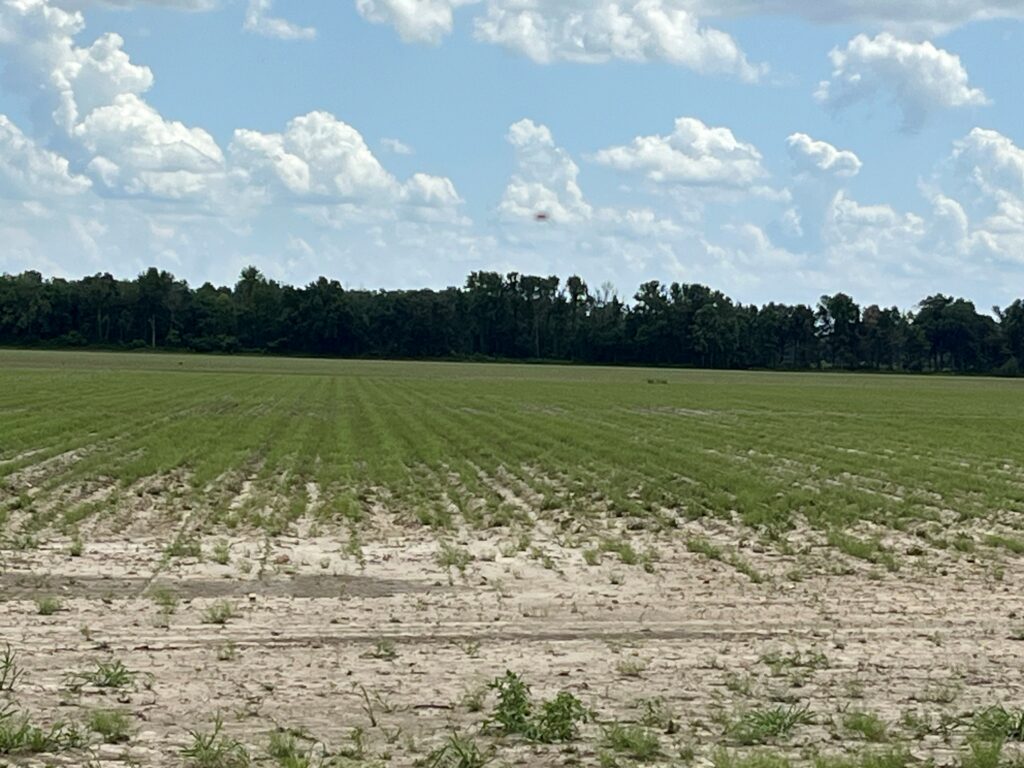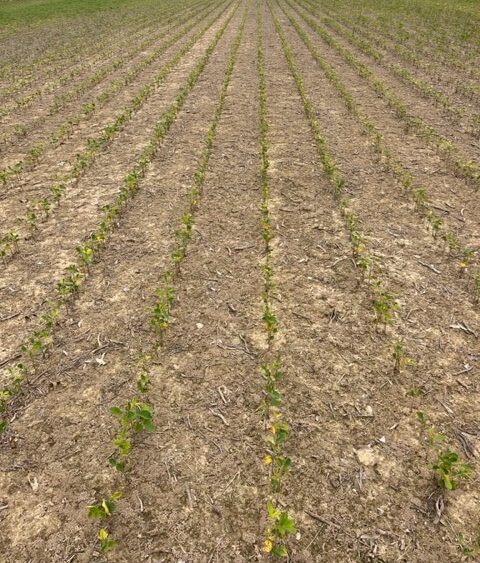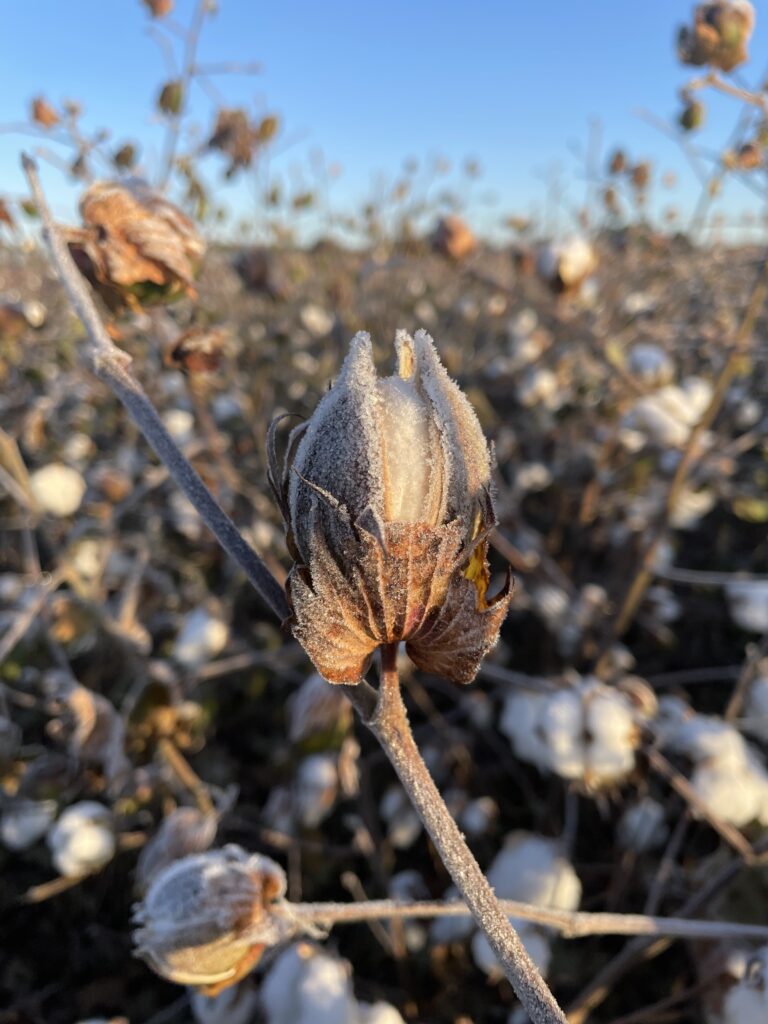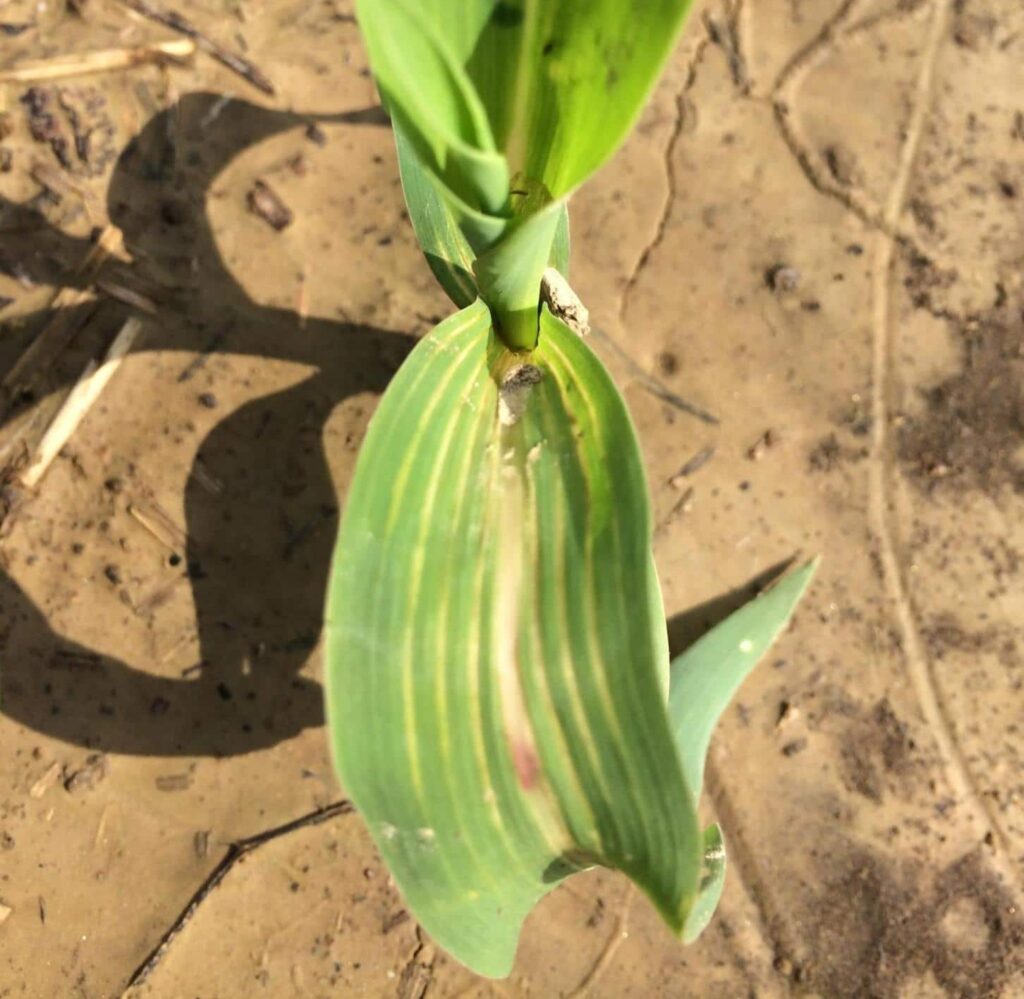From late April and throughout the month of May, many parts of Middle and West TN have received persistent rainfall that is well above the average for this period. These rains have produced persistently wet soil conditions and have coincided with sidedress N fertilizer application where most or all of the recommended N is applied. With this much rain, there is potential for N loss. Continue reading
Recent Updates
Managing Palmer Amaranth and Grass Burndown Escapes

There have been numerous fields where goosegrass, junglerice and Palmer amaranth were not controlled at burndown and the crop has emerged. In some cases, the wet weather delayed burndown to where Palmer amaranth and those grasses were too large to be effectively controlled with one pass of Gramoxone (Picture 1). In other cases, tillage used to help speed up field drying or to build beds partially buried pigweed and grasses which make effective burndown from Gramoxone very problematic (Picture 2). In a few cases, dicamba and glyphosate were used for burndown and they did not control those weeds due to resistance (Picture 3). Continue reading
Pre-Emerge Herbicide Injury in Soybean
The call of the last week was Pre-emerge herbicide injury in soybeans. Several folks reported that their soybeans were “going backwards”. This is not a surprise as in wetter springs the probability of seeing injury from Pre-applied herbicides is greatly increased. That coupled with an increase in soybean acres this spring would increase the probability of herbicide injury in that crop. I would expect more of the same as we move into June with all the rain in the past few days.

Yield potential and management of late planted cotton

In almost every cotton-related conversation I had during early May, the conversation quickly turned to our excellent early planting window- a window which opened earlier in 2024 than any of recent memory. Since then, most have fought to find an opportunity to mud in any acres and many are now considering shifting some farms to soybeans. In this blog, I attempt to cover yield potential of a late planted cotton crop and highlight several very important factors to consider when planting cotton at the end of our ‘normal’ planting window. Continue reading
Fomesafen Carryover into Corn and Grain Sorghum
Carryover injury from fomesafen (Flexstar, Prefix, Reflex, Intimidator, Marvel, Dawn, Rhythm, etc.) is starting to show in a few corn fields. This is because some applications in late June and July in 2023 coupled with a very dry fall allowed the herbicide to persist into winter. Recent rains then allow any herbicide carryover to more completely get into the soil solution.
Fomesafen carryover injury in corn and grain sorghum looks similar. Expect to see stunting and interveinal chlorosis as pictures below sent from crop consultants clearly shows.

Impregnated Pyroxasulfone (Zidua or Anthem Flex) on Fertilizer Application in Cotton Updated
Zidua (pyroxasulfone) applied via impregnated fertilizer in cotton has become popular in Tennessee. My understanding is that about 25% of the cotton acres last year had Zidua applied in this fashion. With the increasingly poor Palmer amaranth and grass control we are experiencing with dicamba + glyphosate, overlaying residual herbicides must be the foundation for weed control. Continue reading
EPA Requests Comments on Acephate Cancellation Proposal
The EPA is soliciting public comment on a registration review decision where the EPA proposes to cancel all uses of acephate, except for injections to non-food bearing trees. Acephate is widely utilized in Tennessee row crop agriculture and is a critical component of IPM programs. Cancelling an important crop protection product would place increased pressure on a limited number of control options available to producers. We are encouraging agricultural professionals to comment to the EPA on the impacts acephate has on your production systems. If you need assistance with comments please contact your UT extension specialist. The link to comment is below. Deadline for comments is July, 1, 2024.
https://www.regulations.gov/docket/EPA-HQ-OPP-2008-0915/document
EPA-HQ-OPP-2008-0915
Cotton Scout School (May 21, 2024)
The UT Cotton Scout School is scheduled for Tuesday, May 21st, at the West Tennessee Research and Education Center (605 Airways Blvd, Jackson). There is no fee, and preregistration is not required. Registration begins at 8:00 AM with the program starting at 8:30. Pesticide points in categories 1, 4, 10 and 12 will be offered and a BBQ lunch will be provided. Content will include classroom and hands-on training with an optional go-to-the-field session after lunch. Topics covered will include cotton development and identification and symptoms of insect pests, plant diseases, and weeds.

